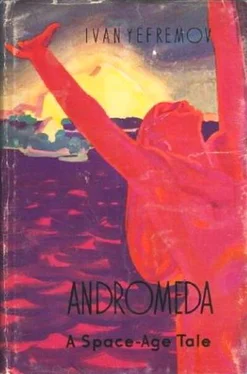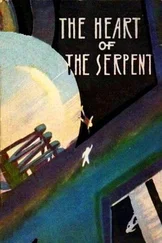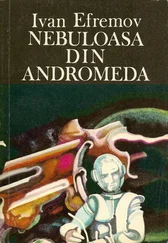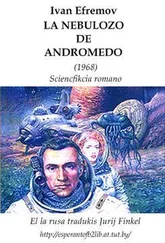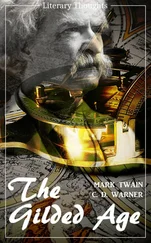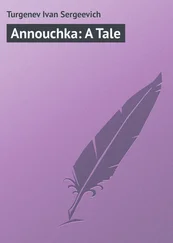Ivan Yefremov - Andromeda (A Space-Age Tale)
Здесь есть возможность читать онлайн «Ivan Yefremov - Andromeda (A Space-Age Tale)» весь текст электронной книги совершенно бесплатно (целиком полную версию без сокращений). В некоторых случаях можно слушать аудио, скачать через торрент в формате fb2 и присутствует краткое содержание. Город: Moscow, Год выпуска: 1959, Издательство: FOREIGN LANGUAGES PUBLISHING HOUSE, Жанр: Фантастика и фэнтези, на английском языке. Описание произведения, (предисловие) а так же отзывы посетителей доступны на портале библиотеки ЛибКат.
- Название:Andromeda (A Space-Age Tale)
- Автор:
- Издательство:FOREIGN LANGUAGES PUBLISHING HOUSE
- Жанр:
- Год:1959
- Город:Moscow
- ISBN:нет данных
- Рейтинг книги:5 / 5. Голосов: 1
-
Избранное:Добавить в избранное
- Отзывы:
-
Ваша оценка:
- 100
- 1
- 2
- 3
- 4
- 5
Andromeda (A Space-Age Tale): краткое содержание, описание и аннотация
Предлагаем к чтению аннотацию, описание, краткое содержание или предисловие (зависит от того, что написал сам автор книги «Andromeda (A Space-Age Tale)»). Если вы не нашли необходимую информацию о книге — напишите в комментариях, мы постараемся отыскать её.
Andromeda (A Space-Age Tale) — читать онлайн бесплатно полную книгу (весь текст) целиком
Ниже представлен текст книги, разбитый по страницам. Система сохранения места последней прочитанной страницы, позволяет с удобством читать онлайн бесплатно книгу «Andromeda (A Space-Age Tale)», без необходимости каждый раз заново искать на чём Вы остановились. Поставьте закладку, и сможете в любой момент перейти на страницу, на которой закончили чтение.
Интервал:
Закладка:
“Achernar is Alpha Eridani, it is high up in the southern sky not far from Tucana… distance — 21 parsecs… the return of a spaceship with the same crew ia impossible,” were the thoughts that flashed through his mind.
The screen was switched off and the sight of the closed hall, adapted for contemplation and conferences by Earth-dwellers, seemed suddenly strange to behold.
“That green star,” the voice of the President continued, “with an abundance of zirconium in its spectrum, is slightly larger than our Sun.” Here Grom Orme gave the coordinates of the zirconium star very rapidly.
“There are two planets in its system,” he continued. “They are twins revolving opposite each other at a distance from the star that ensures them about the same amount of energy as Earth receives from the Sun.
“The depth and composition of the atmosphere and the amount of water are similar to those of Earth. These are the preliminary data obtained by the expedition sent out from planet CR 519. The same report speaks of the absence of intelligent life on the twin planets. Higher forms of intelligent life transform nature to such an extent that it is visible even from a spaceship flying at a great height. We must assume that higher forms of life have not been able to develop or have not yet developed there. This is unusually favourable to us. If there were higher forms of life there the planets would be closed to us. In year 72 of the Great Circle Era, over seven centuries ago, our world discussed the question of settling a planet with higher forms of intelligent life even if they had not reached our level of civilization. It was then decided that any invasion of such a planet would only lead to acts of violence due to the profoundest misunderstandings.
“We now know how great is the diversity of worlds in our Galaxy. There are blue, green, yellow, white, red and orange stars; they are all of the hydrogen-helium type but their mantles and cores are of different composition — carbon, cyanogen, titanium, zirconium — and they have different kinds of radiation, high or low temperatures and atmospheres of different composition. There are planets whose volume, density, depth and composition of atmosphere and hydrosphere, distance from their sun, conditions of rotation all differ very greatly. We also know that our planet, with water covering seventy per cent of its surface in combination with its proximity to a sun that pours a tremendous amount of energy on to it, enjoys conditions favouring the development of powerful living organisms, a rich variety of biological forms that are undergoing constant transformation, a case that is not often met with in the Universe.
“Life on our planet, therefore, developed more quickly than in other worlds where it is hampered by a shortage of water or solar energy or by insufficient dry land. And more quickly, too, than on the planets that have too much water! In the Circle transmissions we have seen the evolution of life on the planets that are under water, life that is crawling desperately upwards on stems of plants sticking out of the water.
“Our planet also has large expanses of water and the area of the continents is relatively small for the accumulation of solar energy through food plants, trees or simply by means of thermoelectric installations.
“In the earliest periods of Earth’s history life developed more slowly in the swamps of the low-lying continents of the Palaeozoic Era than it did on the high land of the Cainozoic where there was a struggle for water as well as for food.
“We know that for an abundant and powerful life there must be a certain ratio of land to water and our planet is very close to the optimum in its composition. There are not many such planets in the Cosmos and every one of them is an invaluable acquisition for mankind as new land where man can settle and continue to develop.
“Man has long since ceased to fear the catastrophic over-population that at one time greatly disturbed our distant ancestors, but still we persist in our exploration of the Cosmos, extending the region settled by our people, for this, too, is progress, this, too, is an unavoidable law of development. So great are the difficulties involved in settling on a planet with physical properties differing from those of Earth that there have long been projects in existence to settle man in the Cosmos on gigantic, specially constructed installations, something like our artificial satellites magnified many times over. You will remember that an island of this type was built on the eve of the Great Circle Era, Nadir, situated more than 18 million kilometres from Earth. A small colony of people still live there but the failure of such closely confined and restricted quarters to satisfy the needs of human life if it is to spread boldly throughout the Cosmos is so obvious that we can only express amazement at our ancestors even though we admire the audacity of their engineering.
“The twin planets of the green zirconium star are very similar to ours. They are unsuitable or difficult to settle for the fragile inhabitants of planet CR 519 who discovered them and passed the information on to us in the same way as we pass our discoveries on to them.
“The green star is situated at a greater distance from our planet than any spaceship has yet covered. If we reach the planets of that star we shall have moved far out into the Universe. We shall move forward, not on the tiny world of an artificial island but on big planets where there is every opportunity for the organization of comfortable life and for mighty technical achievements.
“You now see why I have taken up so much of your time with a detailed description of the planets of the green star — they seem to me to be important objectives for exploration. The distance of seventy light years is feasible for a spaceship of the Lebed type and I think that we should, perhaps, send the 38th Cosmic Expedition to Achernar?”
Grom Orme finished at that point and returned to his place, pushing over a switch on the rostrum as he did so.
A small screen rose up before the audience and on it appeared the head and shoulders of Darr Veter, a massive figure known to many of those present. The former Director of the Outer Stations smiled as he was silently greeted with flashing green lights.
“Darr Veter is now in the Arizona Radioactive Desert from where he is sending groups of rockets 57,000 kilometres into space to build a satellite,” explained Grom Orme. “He wishes to speak and give his opinion as a member of the Council.”
“I propose the simplest possible solution,” came his jolly voice to which the portable transmitter had added some metallic tones. “We should send out three expeditions and not just one!”
The members of the Council and the visitors were taken completely by surprise. Darr Veter was no orator and did not take advantage of the effective pause.
“Our first plan was to send both spaceships of the 38th Expedition to the triple star EE7723….”
Mven Mass immediately pictured the triple star that had been known as Omicron 2 Eridani in olden times. It was situated less than five parsecs from the Sun and was a system of yellow, blue and red stars with two lifeless planets which in themselves were of no interest. The blue star in this system was a white dwarf as big as one of the larger planets but with a mass half that of the Sun. The average specific weight of matter in that star was 2,500 times greater than of Earth’s heaviest metal, iridium.
Gravitation, electromagnetic fields, thermal processes and the creation of heavy chemical elements on that star were of colossal interest and the importance of studying them at close quarters was very great, especially as the 10th Cosmic Expedition that had been sent to Sirius had been lost but had managed to send a warning of the danger. Sirius, a double blue star and near neighbour of the Sun, also possessed a white dwarf of lower temperature and larger dimensions than Omicron 2 Eridani and with a density twenty-five times that of water. It proved impossible to reach this near star owing to gigantic streams of meteorites crossing each other and encircling the star; they were so widely dispersed that it was found impossible to determine the area over which these treacherous fragments were spread. It was then that the expedition to Omicron 2 Eridani had first been mooted, 315 years before….
Читать дальшеИнтервал:
Закладка:
Похожие книги на «Andromeda (A Space-Age Tale)»
Представляем Вашему вниманию похожие книги на «Andromeda (A Space-Age Tale)» списком для выбора. Мы отобрали схожую по названию и смыслу литературу в надежде предоставить читателям больше вариантов отыскать новые, интересные, ещё непрочитанные произведения.
Обсуждение, отзывы о книге «Andromeda (A Space-Age Tale)» и просто собственные мнения читателей. Оставьте ваши комментарии, напишите, что Вы думаете о произведении, его смысле или главных героях. Укажите что конкретно понравилось, а что нет, и почему Вы так считаете.
